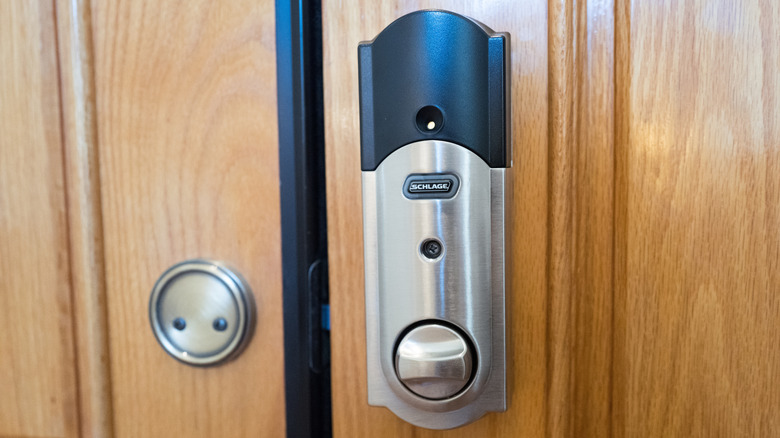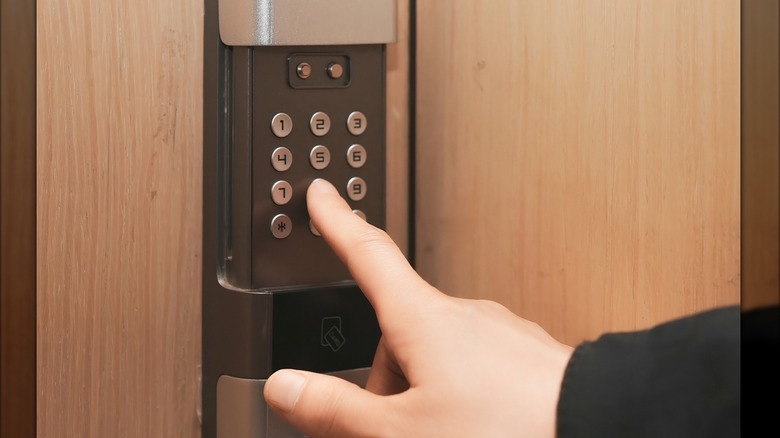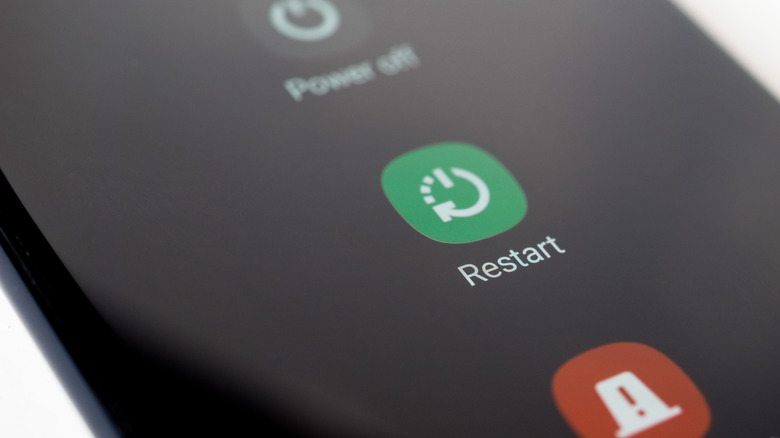Here's What To Do If Your Home's Smart Lock Breaks Or The Battery Dies
The Internet of Things (IoT) describes a network of intelligent gadgets with autonomous capabilities that communicate with each other. According to Grand View Research, this technology is projected to reach $2.65 trillion globally by 2030. Many of the best examples of IoT have become must-have devices that transform houses into smart homes, including smart locks. Why use physical keys when you have modern options like smartphone apps, keypads, or fingerprint scanners?
However, some worry that if their smart lock runs out of power or fails to function properly, they could be locked out. Fortunately, these fears are largely unfounded because many of these smart locks still feature the ability to use a traditional key, if other means of unlocking the unit aren't working. Most of these products utilize batteries and aren't subtle in their methods of alerting you to low power. App notifications and/or incessant audible beeping on the smart lock itself would be difficult to ignore. Even still, with no power, you could always go purchase fresh batteries and then install them, allowing you entry into your home.
Regardless of how many high-tech features a smart lock has available, at its core, it's still just a lock. To quote the great stand-up comedian Mitch Hedberg, "An escalator can never break; it can only become stairs." Similarly, if a smart deadbolt won't unlock via an app or keypad entry, it just becomes a traditional key lock.
What if your smart lock has no power and doesn't include a physical key?
Not every device offers identical features or compatibility with all doors, which is just one of the things you need to know before adding a smart lock to your home. If your smart lock lacks a mechanical keyhole and is out of power, you might have another fix available if your device includes a backup power feature. The ability to unlock your door in multiple ways is a highly rated feature among today's smart locks.
If the keypad appears to be dead, there is a trick to getting into your home using a 9-Volt battery on some models. With certain smart locks, the manufacturer has included power terminals, often located around the keypad. In the event the keypad AA or AAA batteries are depleted, you can temporarily activate and unlock your door using a 9-Volt battery as a power source. So, if your keypad has this backup power feature, you may want to carry a spare 9-Volt battery with you just in case.
What about connection or application errors?
If the device has power but refuses to cooperate, the problem could be a result of connection issues or errors within the application itself. One cause of these problems can be overlooking device compatibility, which is just one of many mistakes you might be making when installing smart home products around your house. Fortunately, there are still some simple steps you can take to hopefully resolve your troubles. For instance, if your smart lock uses Bluetooth to talk to your smartphone, disabling Bluetooth and then reenabling it, can resolve some connection problems.
If the smartphone application isn't responding or displaying errors, a simple restart of your phone could get things working again, by reverting to earlier functioning settings or reestablishing connections. If app errors persist, while inconvenient, uninstalling and then reinstalling the smart lock application on your smartphone might help eliminate any digital gremlins in the software holding things up.


